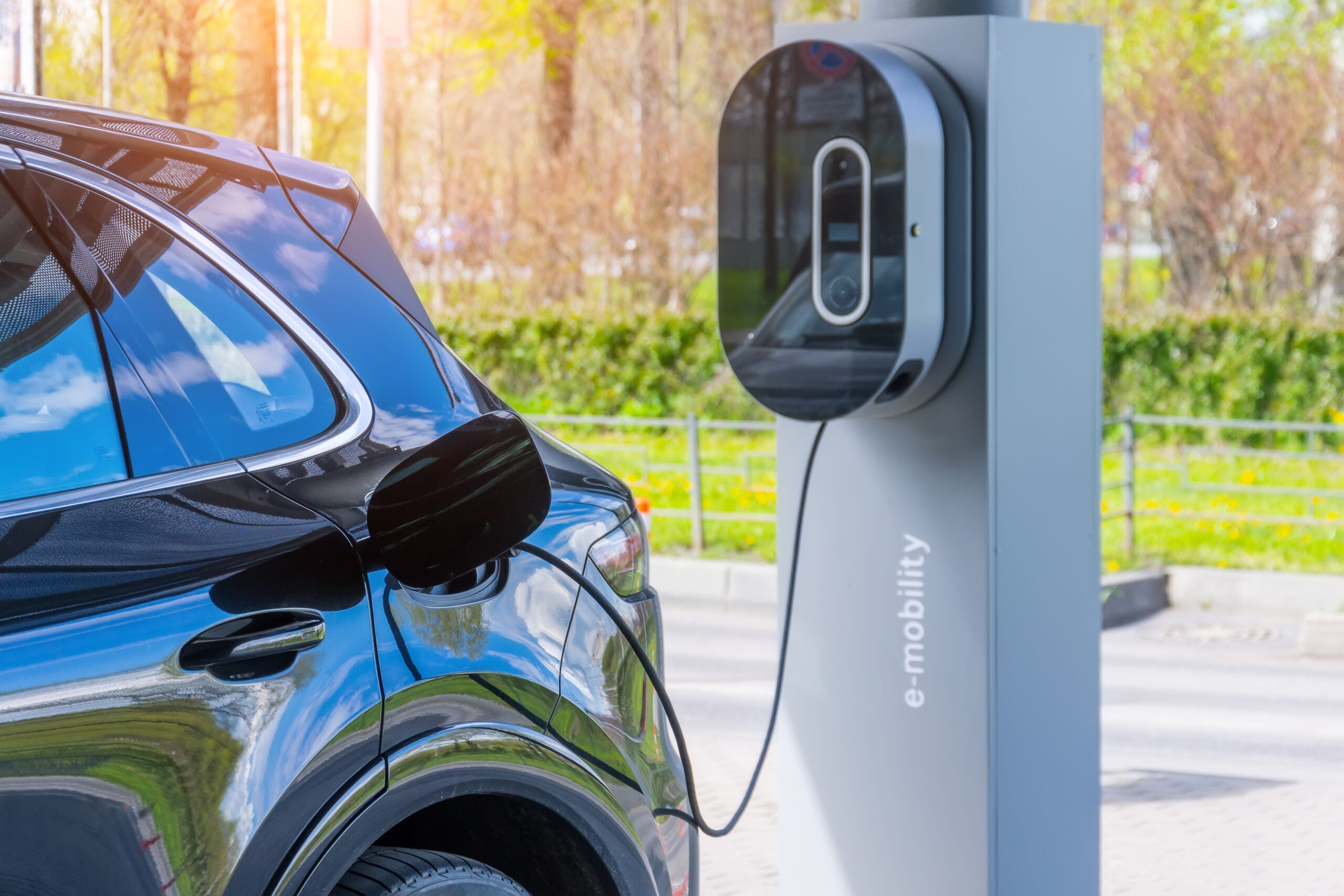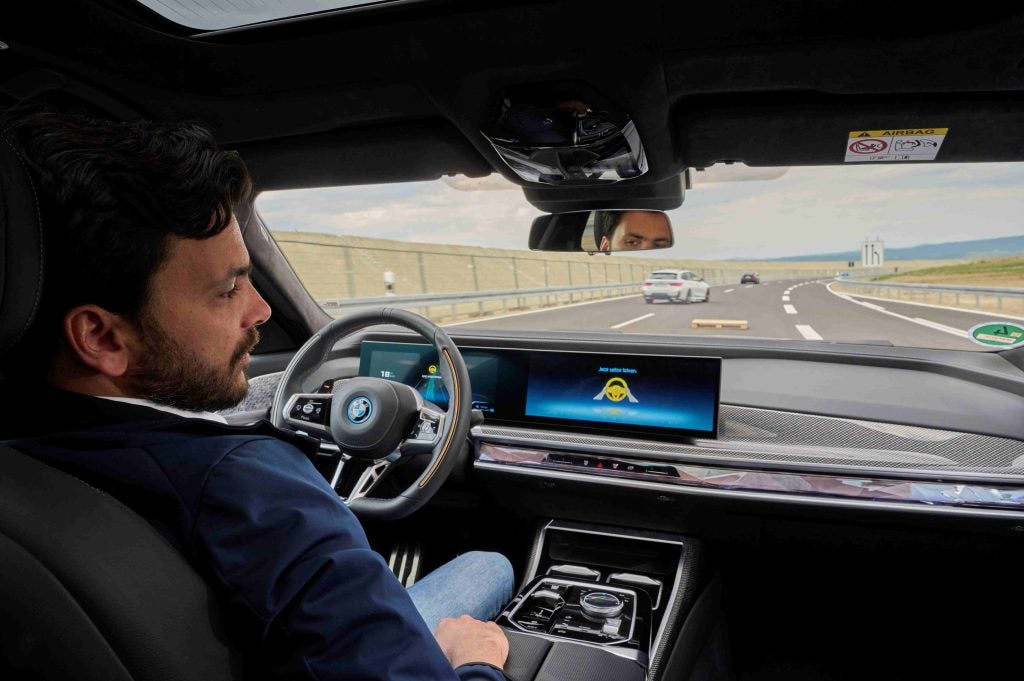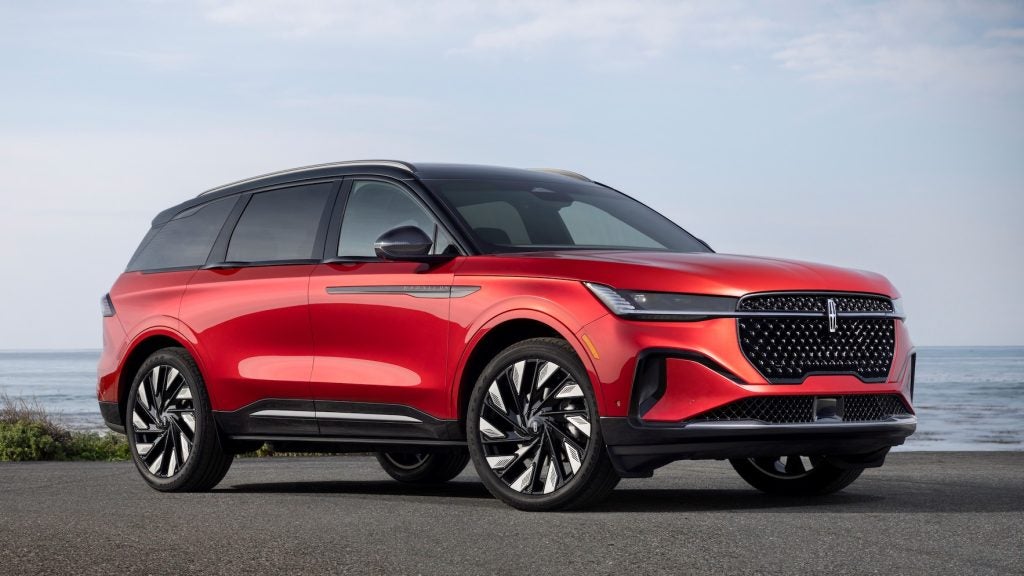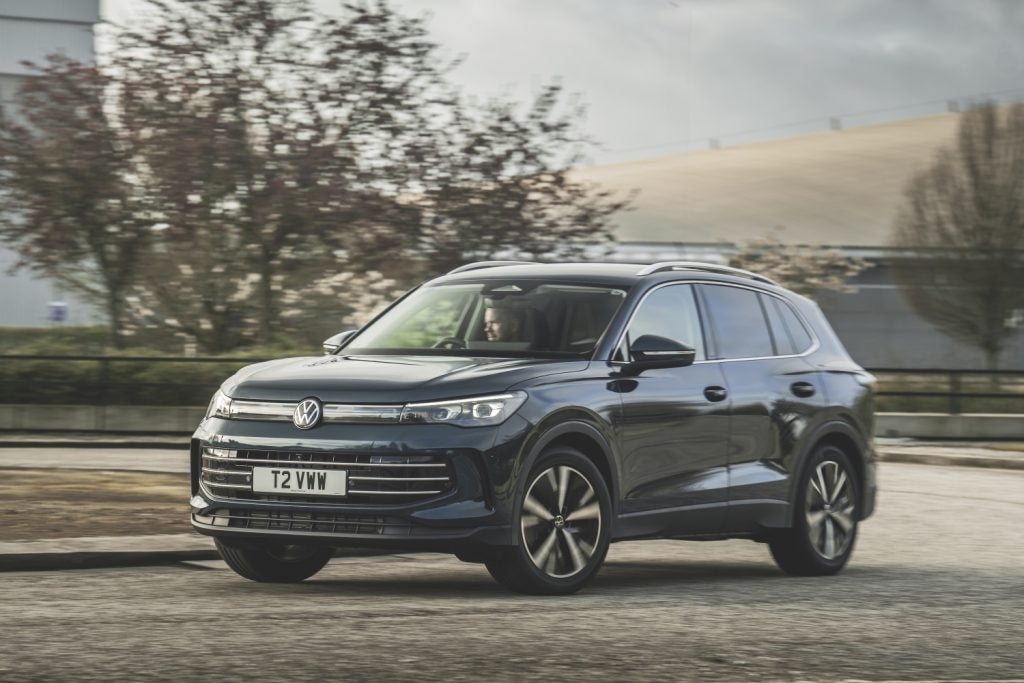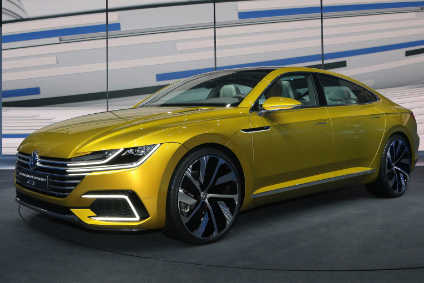
The future model strategy for the VW brand is explored here in this, the first of a six-part series concerning the Volkswagen Group's passenger car brands. The other chapters will be a focus on Audi; then SEAT; Škoda; Bentley, Lamborghini and Bugatti; and finally Porsche.
A segment (Mini-cars)
How well do you really know your competitors?
Access the most comprehensive Company Profiles on the market, powered by GlobalData. Save hours of research. Gain competitive edge.

Thank you!
Your download email will arrive shortly
Not ready to buy yet? Download a free sample
We are confident about the unique quality of our Company Profiles. However, we want you to make the most beneficial decision for your business, so we offer a free sample that you can download by submitting the below form
By GlobalDataVolkswagen is a major player in the European city car class, but apart from Brazil, does not compete in any other major market. The up! is built in Bratislava and Taubaté.
A new generation model, VW130, is due to enter production at the Slovakian plant in 2019 followed by the Brazilian factory in 2020. The MHB Evo platform should be the same as that to be introduced by the next Audi A1. This is an update of the existing car's architecture.
The Fox, a five-door small car, which has had multiple updates, is now in its twelfth year of production at VW do Brasil's Curitiba plant. The next model has been delayed by the country's ongoing financial crisis and depressed new car market. It should now appear in the second half of 2017.
B segment (Sub-compact)
A new Polo (VW270) is now only a few months away. It will use the MQB Zero platform with Navarra (Pamplona) to be the lead plant. The Spanish factory will concentrate on hatchbacks for European markets but there will be a sedan (VW271) for Russia (Kaluga plant), India (Chakan), Malaysia (DRM Hicom: Pekan) and possibly China (SAIC VW: Anting, Shanghai). In some countries this will again use the Vento model name.
A Polo sized crossover/MPV in the style of the Opel/Vauxhall Meriva replacement will reportedly also be built at Navarra. This should reach European markets in 2018.
India's Ameo will eventually be replaced by a sub-4m derivative of the next Polo but as the current model only entered production at Chakan (Pune) in May, this will not take place until around 2023.
Brazil's eight year old Gol hatchback and Voyage sedan models still have a further two years of production ahead of them. New models are due to start rolling off the lines in late 2018 at Taubaté and Anchieta/São Bernardo do Campo, both in the state of São Paulo. Like the next Fox, these will probably use a re-engineered PQ24 platform.
C segment (Compact)
A facelift for the Golf is only days away from being revealed to the media. Production at Wolfsburg and Mosel will commence in December with the next generation (VW380) due out in 2019. Having invested heavily in the MQB architecture for the existing Mark VII series range, VW will update rather than replace MQB A/B, the derivative used by the Golf.
China has multiple C segment models. The Lavida and Bora are more or less the same car though they have different styling. SAIC Volkswagen builds the Lavida sedan, wagon (Gran Lavida) and crossover (Cross Lavida), while FAW VW has the Bora. Their architecture is derived from that of the fourth generation Golf but the 2019 replacements should use the far more modern MQB A/B. As at the end of September, the Lavida was far and away VW China's most popular vehicle, with deliveries reaching 409,802 units.
The Lamando (LingDu in Chinese) is exclusive to China and can be thought of as a Jetta CC. SVW began selling this model in November 2014. A facelift is scheduled for the first quarter of 2018 and a successor in late 2021. That car should be manufactured at Ningbo with its architecture an update of MQB A/B.
There are a few models in production badged as the Jetta, the oldest dating to 1991 (VW321). This is manufactured by FAW VW and sold mainly to taxi drivers. It is due to be phased out by mid-2017.
VW361, which is manufactured in Mexico, China, Brazil and Russia, has been in production since 2010 and will be replaced in 2018. The USA is one the world's largest markets for this, the sixth generation Jetta, the other being China, where the car is sold as the Sagitar. This Jetta is also assembled Malaysia and Nigeria but these are low volume plants. The next Jetta will use MQB A/B.
SAIC Volkswagen's Santana is another model popular in China in the C segment. FAW VW builds a similar model and this is another car called Jetta. Both went into production during the final quarter of 2012. There is also a five-door hatchback, the Gran Santana. All of these cars should be replaced from late 2019, switching from the outdated PQ25 platform to MQB A/B.
One other compact VW is the Beetle. There had been rumours suggesting that the car would not be replaced but in April 2015, Volkswagen told the media that it would be, "within three years". However, in light of the rising costs of the TDI scandal, this project could well be facing the chop as the current Beetle series is not a big seller.
D, E & F segments (Mid-size, Large/Executive & Luxury)
Unlike just about all of its rivals, the Passat continues to perform well in Europe. Add in the Skoda Octavia/Superb and the Volkswagen Group pretty much dominates the region's D sedan, hatchback and estate segment. A new Passat isn't due until 2021 and that will be after a facelift for Europe's car in 2018.
There is a question mark over what Volkswagen of America will do with its own Passat, a larger model than the one built in Germany. These vehicles' lifecycles are out of sync, with the sedan manufactured in Chattanooga having gone into production in 2011 versus 2014 for the Passat built in Emden, Mosel/Zwickau and elsewhere (China, Russia).
The 'big' Passat, which is also made in China by SAIC Volkswagen as a complement to FAW Volkswagen's Magotan, may be given another facelift and remain in production until 2020, reaching the market a year ahead of the debut of the B9 series model in Europe. There is also a chance that the car built in Germany may be pulled forward to 2020, to be followed soon after by the introduction of the same MQB architecture model for the US and SAIC Volkswagen. In that case, FAW VW's Magotan, which is more or less the same car as Europe's Passat sedan, would be given bespoke front and rear ends to differentiate it from the next 'New Passat'.
The current CC is overdue for replacement. The new model, VW484, should be in production by mid-2017 after a debut at the Detroit show. The Sport Coupé Concept GTE which premiered at the Geneva motor show in March 2015 was a preview of what the new CC will look like.
Above the next CC but below the second generation Phaeton sits the Phideon, a 5m-long sedan for China. Though it's about the same length as the Ford Taurus, Buick Lacrosse, Citroen C6 and Toyota Crown, VW China has given it higher pricing than these models. The car entered production at an SAIC Volkswagen plant in September. Exports have not been ruled out but even if they do eventuate, numbers would be very small.
Roughly two years after the new CC goes on sale in Europe, there should be a second generation Phaeton. The project to replace Volkswagen's largest sedan has had many twists and turns, the latest development announced in a media statement on 13 October 2015:
The Volkswagen Phaeton has embodied the brand's technological competence and brand ambition from the first generation onward. The future generation of the Phaeton will once again be the flagship for the brand's profile over the next decade. In light of this, the Board of Management redefined the current project. The specification features a pure electric drive with long-distance capability, connectivity and next- generation assistance systems as well as an emotional design.
Phaeton 2 will supposedly share many modules with the next Audi A8 and S8. There are also reports that the car's entry-point price will be lowered and that the next generation Passat CC will become more expensive so as to bridge what would otherwise be too large a gap between the cars. Phideon pricing in the Chinese market may have to be adjusted upwards once the new Phaeton is launched there, which should be in the first half of 2019.
EVs & PHEVs
If Volkswagen intends to sell the next Phaeton only as an EV it is taking quite a risk. The VW passenger cars division does seem determined to embrace a future where it will be selling multiple electric vehicles, even though so far it has had only mixed success with the e-up!, e-Golf, Golf GTE and Passat GTE.
Hybrids seems to be falling from favour within Volkswagen, with pure EVs and PHEVs seen as the future. The next generation model line-up will commence with the successor for the e-up! remaining as a plug-in A segment hatchback and due on sale in 2020. An electric Polo will likely be out in 2018, followed by the next Golf GTE in late 2019.
In 2020, VW will release an electric crossover based on the recently revealed I.D. concept. It is expected to have an NEDC range of up to 500km (311 miles) and to be capable of being recharged in 15 minutes. This will be the brand's first EV to be specifically designed as such and its basis will be the MEB architecture.
The 4.1m long concept was shorter than a Golf, but with a wheelbase (2,740mm) almost on a par with the Passat. VW also says a fully autonomous model is being developed for release in 2025.
Right now, it remains unclear whether the I.D. and the BUDD-e concept will both make production. VW revealed a prototype of this electric Microbus at CES (Consumer Electronics Show) in January this year, its executives hinting that a version may be built. The concept's all-wheel drive system had a claimed total power output of 235 kW/317 PS and it was to be possible to charge the battery to 80 percent of its capacity "within just around 30 minutes". Size wise, the BUDD-e was larger than the I.D. so if built, it would be positioned just above the Touran.
In addition to being the platform for the production version of the I.D., MEB will be used for the electric cars which Volkswagen will produce in China with its JV partners, SAIC and FAW, in 2020 or 2021. Jochem Heizmann, Volkswagen China's CEO, made this announcement to Chinese journalists at the 2016 Paris motor show, where the I.D. was revealed. He did not give any details of the models to be made by SAIC Volkswagen and FAW Volkswagen.
Jochem Heizmann also stated that an EV brand is planned for China, with the first model to be supplied by JAC. The reason given was that Volkswagen could this way have an electric vehicle ready for the local market ahead of legislation which mandates their production. OEMs selling more than 50,000 passenger vehicles a year will either need to produce electric cars locally or buy credits from other firms. Then, by 2020, another law comes into force which says auto makers operating in China must have a fleet average consumption of 5 litres per 100 km (47mpg US).
The deal with JAC is believed to be a short term solution. The model to be supplied by the Chinese company will likely be a small sedan based on the JAC iEV6 or else the replacement for the iEV4.
Other future electric models should include GTE (plug-in hybrid) versions of the Phideon (2017), Tiguan (2017 or 2018), Jetta (2018) CC (late 2017), Golf (2019/2020), Passat/Magotan (2020/2021) and Touareg (2017/2018). The soon to be released Atlas and Terramont SUVs have also been developed with the possibility of PHEV power.
Coupés & Pick-ups
VW374, the next Scirocco, is another vehicle project, like the CC, which has been delayed. By the time the new model goes on sale in 2017, the current Scirocco will have been in production at Setúbal in Portugal for almost nine years. The existing car has the same platform as the fifth generation Golf but its successor has been developed on MQB A/B.
With production of the XL1 streamliner having now ceased, the Golf Cabriolet is the brand's only other coupe. Its future doesn't look good, though. Either this model or the Beetle Cabriolet should be replaced, but not both. As the latter is the only one of the two sold in the USA, it seems more likely that it will be the open top Beetle which has a successor. Despite Britain traditionally being one of the world's best markets for open cars, Volkswagen UK ceased imports of the Golf Cabriolet in September 2016.
When it comes to pick-ups, Volkswagen has two. The smallest is Brazil's Saveiro and this is based on the B segment Gol hatchback and Voyage sedan. Given the poor state of the Brazilian market, a new Saveiro has reportedly been pushed back to 2019, which means the existing model will have a ten-year lifecycle. That's unlikely to be the case for its successor, which should be replaced around 2027.
There is quite a size gap from the Saveiro to the one-tonne Amarok. VW's largest pick-up is now seven years old and two-three years away from being replaced. A revamp of the body-on-frame RPU platform should be used for the new model, and this seems likely to be manufactured in both Argentina (Pacheco) and Germany (Hanover).
MPVs (Minivans)
MPVs are big business for Volkswagen, the brand having quite a range. That starts with the little Suran, a model for South America. Also sold as the SpaceFox or SportVan, the next model is due in the second half of 2017. All production should be at Pacheco. The new car is likely to be more of a crossover than a minivan.
In Europe, the smallest MPV is the Caddy People. The existing VN377 model was launched in 2015 and its lifecycle should extend out to 2026 and that includes two facelifts.
Above the Caddy is the Golf Sportsvan, which is sold as the Golf SV in some countries. As it is only two years old, the next news will be a facelift (2018) and then replacement in 2021. That model, VW389, will be on an updated version of MQB A/B.
The Touran is also relatively new (2015) so VW388 won't be released until 2025 or possibly later, given that the first generation was built for 12 years. As the car is 12cm longer than the old Touran, VW has chosen to offer both in China. There, the newer model is sold as the Touran L.
The present Sharan, which is the twin of the SEAT Alhambra, has been manufactured in Portugal since 2010 so its VW438 replacement isn't too far off. This should appear in early 2018. The architecture will be MQB A/B. In addition to build again being at Setúbal, the next Sharan will likely also be made in China.
The current T6 full sized minivans were updates of the T5 generation models rather than all-new. Released in European markets in mid-2015, the line-up consists of the Transporter (light commercial van), Caravelle (aimed at businesses, families and outdoor sports enthusiasts), Kombi and Shuttle (minibuses for commercial and private use), California (camper) and Multivan PanAmericana (higher ride height). A facelift is probably as far off as 2021 and a T7 replacement likely won't appear until 2027.
Crossovers & SUVs
Volkswagen has been curiously lacking an extensive range of vehicles in these segments but that situation is changing rapidly. The smallest model is the cross up! which has been built in Bratislava since 2013. This small crossover, a rival is the Fiat Panda Trekking, sits higher than the up! and has wheelarch extensions and larger bumpers. Despite the mini-4×4 looks, drive is to the front axle only. A new model should arrive in 2018.
VW do Brasil's Space Cross is the same as Argentina's Suran Cross. The small wagon went on sale in both markets in 2011 and is a rival for the Fiat Palio Adventure. A successor should appear in either late 2017 or during the first half of 2018.
There are two future models for the B and C segments of the global SUV market. The first is VW126. Volkswagen revealed a small SUV concept, the Taigun, at October 2012's Sao Paulo auto show. The first plant to build a production model based on that concept had been expected to be Taubaté but it now seems that the economic downturn in Brazil has seen those plans put on hold.
A modified Taigun concept debuted at the Delhi motor show in February 2014. The main change was an externally mounted spare tyre. According to VW, the Taigun concept was 3,859mm long; with mounted spare wheel, it was 3,995mm. Width was 1,728mm and height was 1,570mm (with roof rails 1,605mm). The wheelbase was quoted as being 2,470mm.
A fresh B-segment SUV concept appeared at the Geneva motor show in March 2016 and a production model based on this prototype should be manufactured in Europe (Bratislava seems likely), India and China. This vehicle would be a rival for the Opel/Vauxhall Mokka X, Fiat 500X, Jeep Renegade and Ford EcoSport. The Geneva 2016 concept, the T-Cross Breeze, was a convertible but the production model would be a five-door hatchback.
The production name for VW126 is expected to be T-Cross, though it might be Taigun.
An SUV that will be larger than the T-Cross/Taigun is due in 2019. Such a model was named by Volkswagen executives speaking at the Geneva motor show in March 2016. The 'T-Roc' will be positioned in what the company calls the Golf class. The second generation Tiguan is larger than the first so this is the reason why there is space in VW's range of SUVs above the future T-Cross/Taigun. The T-Roc, originally a two-door SUV concept, was first seen at the 2014 Geneva motor show.
The latest Tiguan went into production only nine months ago. It should be replaced in 2024 after a mid-life update in late 2020. The standard car has a longer wheelbase than the first generation Tiguan, and the existing Tiguan L, a model built only in China, will go global for its second generation.
The LWB car for China will again be made by SAIC Volkswagen (formerly Shanghai Volkswagen or SVW). This will be at the Changsha plant in south central China.
Volkswagen stated in March 2014 that the next Tiguan would be manufactured in Wolfsburg and Hanover. As well as in Germany and China, the VW Group's Kaluga plant should again build the Tiguan in Russia. There might also be assembly in India. Further, VW's Puebla plant in Mexico will also make the model, it was announced in March 2015. North America's 2018 model year Tiguan will be available from mid-2017 and will fit into the range below the US-built Atlas.
Volkswagen de México's March 2015 announcement said that a "three-row version of the Tiguan" would be produced at Puebla. The company is spending the equivalent of US$1 billion for the expansion and modernisation of its production facilities at the plant. Volkswagen specified that the production capacity for this longer Tiguan will be 500 units per day. This model will be supplied to North and South America, as well as other world markets (excluding Europe and China).
As well as replacements for the standard and long wheelbase Tiguans, there will be a coupe-style derivative and this should be released in 2018.
The second generation Tiguan uses the latest iteration of the Volkswagen Group's MQB architecture matrix. This is not only closely linked to the Golf and Audi A3, but also to other SUVs such as the new Audi Q5 and Skoda Kodiaq.
The Tiguan will be the first Volkswagen to use a petrol turbo engine fitted with a particulate filter. As at September 2017 and according to the Euro 6c norm, all new type-approved gasoline-powered vehicles in the EU must emit particulates at just one tenth of the previous amount. The Volkswagen Group's CEO Matthias Mueller told the media and shareholders in June 2016 that a new series of TSI and TSFI engines will steadily be rolled out, featuring such particulate traps. The Tiguan 1.4 TSI will come first, followed by the Audi A5 2.0 TFSI. The CEO says up to seven million Group vehicles should have the filters by 2020. The supplier has not been named, but the Mercedes-Benz S 500 already has such a system and the technology comes from Faurecia.
Alltrack versions of the Golf and Passat estates can be thought of as crossovers, especially as they are marketed as such in some countries. A facelifted Golf will be announced in early November, with a replacement due in 2019. As for the Passat Alltrack, its mid-cycle update is due in 2018, as is China's Magotan Alltrack which is essentially the same car.
An Amarok SUV (not its model name) is expected to be released in 2020, a year after the arrival of the next generation pick-up. It will be a global rival for the Toyota Fortuner, Ford Everest, Isuzu mu-X and Mitsubishi Pajero Sport. Production will most likely be in Argentina and like others in its class, it will have a separate chassis.
There be two other models slotted into VW's global SUV range above the Tiguan and these have been specially developed for North America and China. The larger of the two, the Atlas, will take on the Ford Explorer and Honda Pilot in North America as well as the Toyota Highlander in both markets. A shorter variant will also be built and sold in China, reason being to give both of VW's JVs a model.
The 5,039mm long seven-seat Atlas will be manufactured at Volkswagen of America's Chattanooga plant on a new line with production due to commence in December. SAIC Volkswagen should also manufacture the same vehicle in Changsha, though its version will be badged 'Teramont'. FAW VW will make a differently styled five-seat model at a plant in the city of Changchun. That vehicle's name is not yet known.
The Atlas will be shown to the media on 27 October, with its public debut expected to be at the LA auto show in November. The Teramont should also appear next month, probably at AutoGuangzhou.
At the top of the Volkswagen SUV tree sits the Touareg. The next model is now only a few months away, though production may not commence until mid-2017. Like the Teramont and Atlas, Touareg 3 will be based on MQB.
The T-Prime Concept GTE which premiered at the Beijing motor show in April 2016 is thought to have been a prototype of a PHEV version of the third generation Touareg. This means the new model would be larger than the existing Touareg, which makes sense, as it would otherwise be similarly sized to the Atlas and Teramont.
VW issued this statement at the Beijing show so as to explain its future SUVs strategy:
The T-Prime Concept GTE is part of an SUV product offensive that was launched this spring with the European debut of the new Tiguan. In future this successful model will, for the first time, also be available with an extended wheelbase. In the classes above it, this will be followed by a new mid-size SUV for China and the USA as well as the successful Touareg or a vehicle based on the T-Prime Concept GTE. Beneath the Tiguan, two new SUV model series will also make their debut: in the Golf class there will be an SUV based on the T-ROC concept car. The T-Cross Breeze presented in Geneva in March, on the other hand, gives a glimpse of a future SUV in the Polo class.
There are also reports that a rebodied Touareg might be under development as a kind of 'Touareg CC'; i.e. a lower-priced rival for the BMW X6 and Mercedes-Benz GLE Coupé.
Future model plan reports for other manufacturers can be viewed in the OEM product strategy summaries section of just-auto.com.
Future product program intelligence
More data on vehicle lifetime and future product plans is available in PLDB from QUBE.


